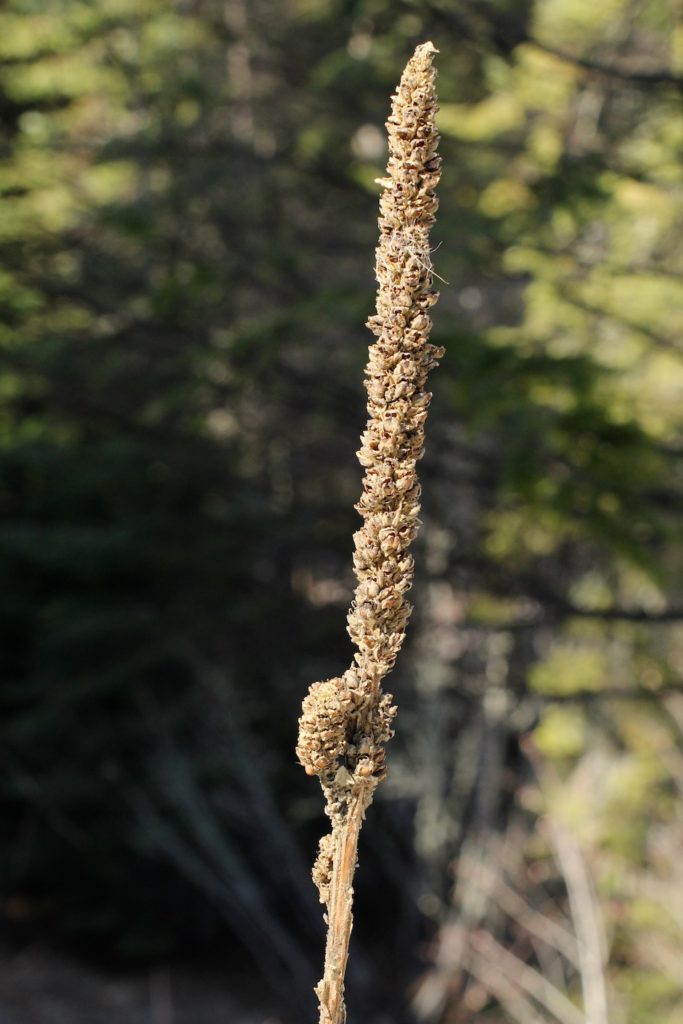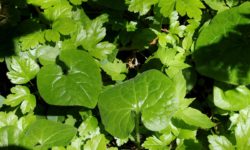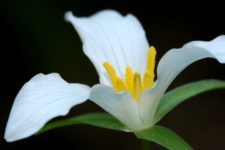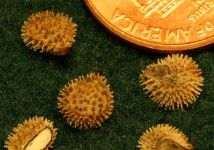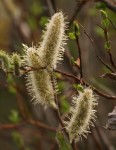Some plants are pretty to look at, others are fun to play with. Mullein is one of those the kids think is fun to play with. They have picked countless soft leaves to make pretend chicken nests. In the winter they enjoy whacking the brown stalks and seeing the “billion” seeds scatter onto the snow.
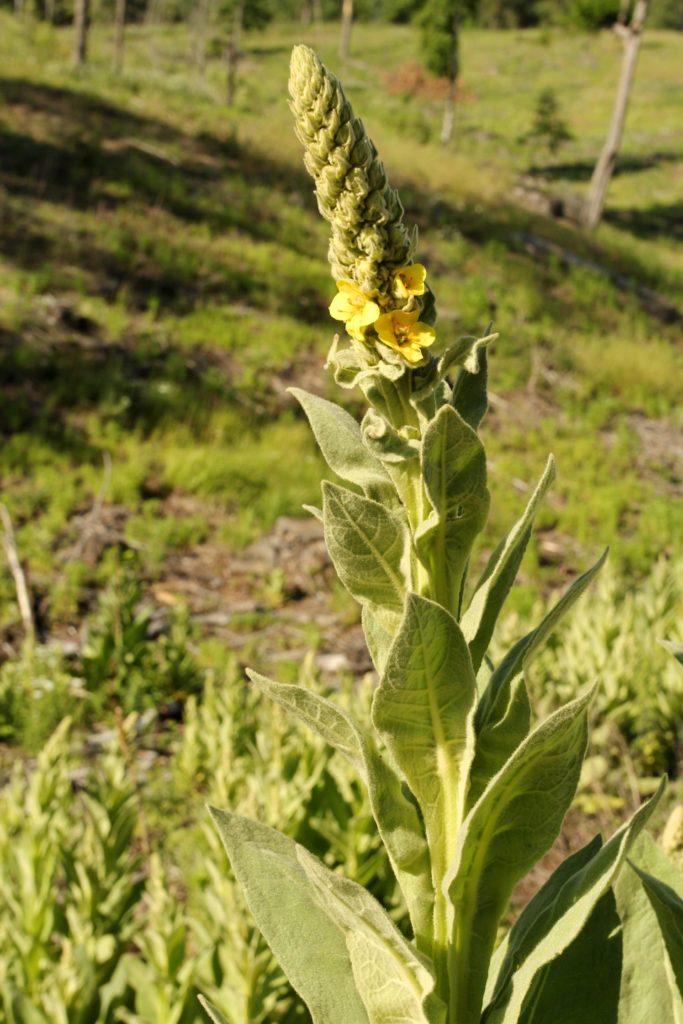
The soft leaves, dead brown stalks and plethora of seeds are characteristic of great mullein (Verbascum thapsus). While mullein is a common plant, the following traits may be less known.
Mullein is an introduced species. Mullein was likely introduced by settlers in the eastern United States more than 230 years ago. By 1905, mullein was reported in Boulder County, Colorado and in 1932 was observed in Mount Rainer National Park in Washington and in Hawaii. In 1968, mullein reached Alaska. Mullein is a nonnative species throughout most of North America including all 50 states and all the southern provinces of Canada.
Mullein is a prolific seeder. A mullein flower stalk (called an inflorescence) can produce hundreds of flowers and each flower contains an average of 208 tiny seeds but can contain nearly 750 seeds per capsule according to the USFS. On average, one mullein plant can produce between 175,000 to 223,200 seeds!
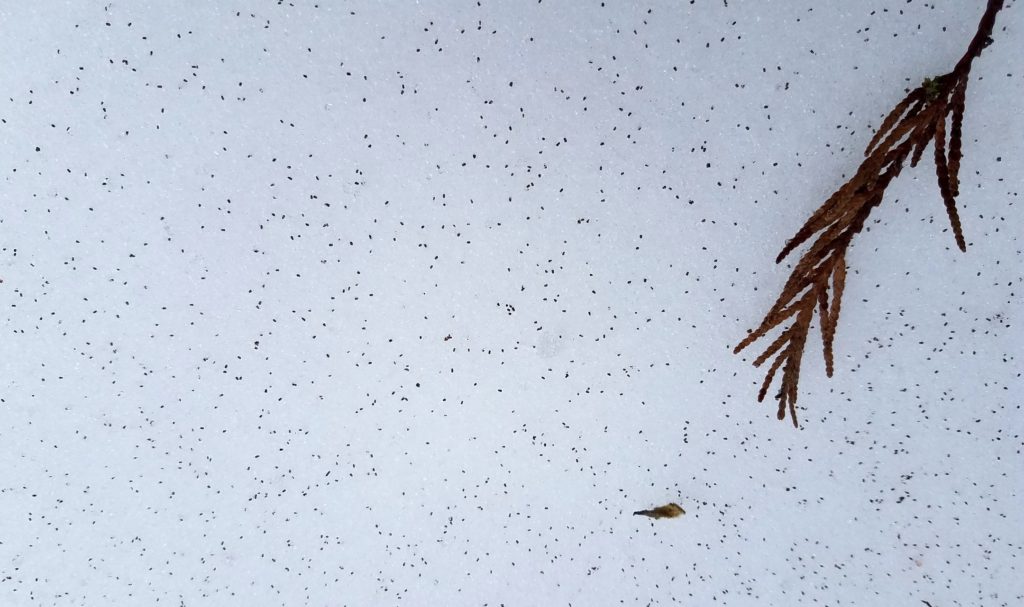
Mullein seeds last a century. Mullein prefers to grow in disturbed soil where there is plenty of light, like along roadsides, at logging sites or construction sites. If the conditions aren’t ideal for germination, a mullein seed stays viable in the soil for more than 100 years. Once disturbance happens, mullein seeds germinate.
Mullein flowers stay open one day. Mullein flowers open from the bottom of the flower stalk to the top and each flower only stays open for one day, so it is a progressive bloom. Typically the flowers open before dawn and close in mid-afternoon.
Mullein flowers can be self-pollinated or cross-pollinated. During the one day each flower is open, the plant relies on cross-pollination. But if no pollinators visit the plant by the end of the day, the flower self-pollinates itself (called “delayed selfing”). Self-pollination results in fewer seeds produced.
Mullein is a biennial plant. The first year of growth results in a basal rosette of soft, woolly leaves. If the rosettes attain a certain size (one study deduced greater than 6.1 inches), then the second year the flowering stalk will shoot skywards up to seven feet.
Mullein is a hardy plant that indicates disturbed soil because you won’t find it growing in established forests. However, after a disturbance to the soil like logging or clearing a house site or garden, any exposed mullein seeds will grow.
Mullein may be prolific after a disturbance but after other plants begin to take over, mullein will begin to diminish much to the dismay of my children. However, the mullein seeds will be waiting for another chance.
